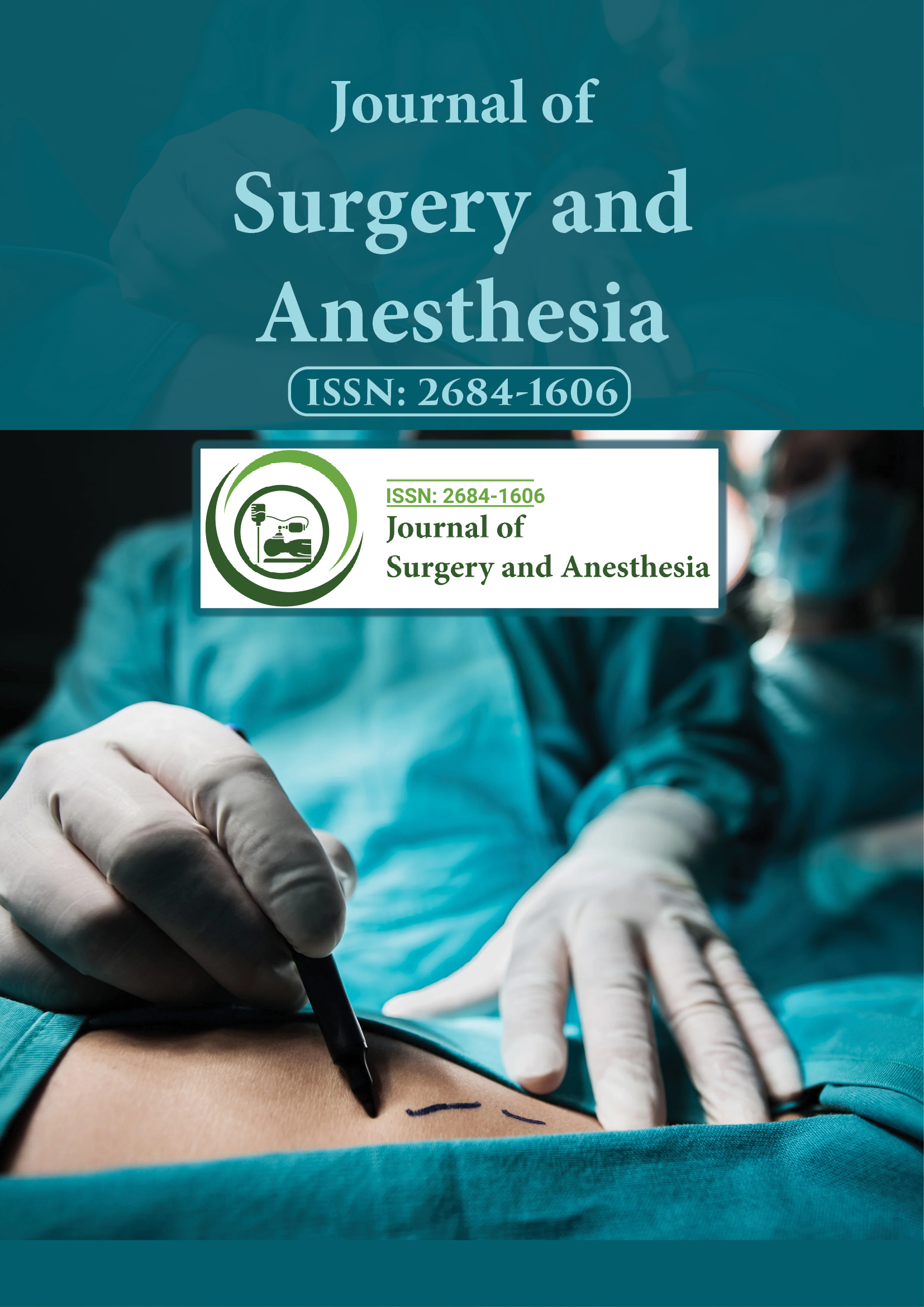Indexed In
- Google Scholar
Useful Links
Share This Page
Journal Flyer

Open Access Journals
- Agri and Aquaculture
- Biochemistry
- Bioinformatics & Systems Biology
- Business & Management
- Chemistry
- Clinical Sciences
- Engineering
- Food & Nutrition
- General Science
- Genetics & Molecular Biology
- Immunology & Microbiology
- Medical Sciences
- Neuroscience & Psychology
- Nursing & Health Care
- Pharmaceutical Sciences
Editorial - (2021) Volume 5, Issue 1
Laparoscopic Surgery and its Benefits
Stephen Smith*Received: 06-Jan-2021 Published: 28-Jan-2021, DOI: 10.35248/2684-1606.21.5.e138
Laparoscopy
Laparoscopy is a surgical diagnostic technique used to examine the organs inside the abdomen. it is a low-risk, minimally invasive procedure that needs only small incisions. Laparoscopy uses an instrument called a laparoscope to seem at the abdominal organs. Although patients tend to consider laparoscopic surgery as minor surgery, it’s operation with the potential for major complications visceral injury and bleeding, injury to the bowel, or injury to the bladder. In laparoscopic surgery, the surgeon makes several small cuts. Usually, all is not any quite a half-inch long. They insert a tube through each opening, and therefore the camera and surgical instruments undergo those. Then the surgeon does the operation.
Laparoscopic surgery, a gaggle of minimally invasive surgery procedures, is improving the standard of lifetime of patients. within the operating room, the laparoscope is maneuvered by a camera assistant consistent with verbal instructions from the surgeon. Laparoscopes with 3D high-definition are commercialized. 3D vision can provide a way of depth, which is predicted while performing MIS. “Camera shake” may occur thanks to fatigue of the person holding the laparoscope/camera, which can cause the surgeon to lose orientation, especially when using 3D vision. Therefore, a laparoscope holder is a crucial and effective advancement for performing laparoscopic surgery. Laparoscopy is playing an increasingly important role in gynecologic oncology.
The potential role of laparoscopy in neoadjuvant therapy for ovarian cancer and in surgery for early-stage ovarian carcinoma remains controversially discussed and is currently being assessed in further studies. employing a minimally invasive approach in gynecologic oncology procedures demands strict adherence to oncological principles and requires considerable surgical skill. Laparoscopic surgery is firmly established because the best intervention in acute appendicitis, acute cholecystitis and most gynaecological emergencies but requires further randomised controlled trials to definitively establish its role in other conditions.
Benefits
Working this manner has several advantages compared with traditional surgery. Because it involves less cutting:
Smaller scars.
Discharged from the hospital quickly.
Feel less pain while the scars heal, and that they heal quicker.
Less internal scarring.
The risk of bleeding during surgery is reduced because the dimensions of the incision made is such a lot smaller than the massive incision that’s made for open surgery. This reduces the likelihood of a transfusion being needed to catch up on blood loss.
The smaller incision size also reduces the danger of pain and bleeding after surgery. When an outsized incision has been made, patients usually require long-term pain relief medication while the stitch-line heals. With laparoscopic surgery, the post-surgical wound is far smaller and therefore the healing process much less painful.
The smaller incision also results in the formation of a significantly smaller scar after surgery. In cases where the surgical wound is larger, the connective tissue that forms is more likely to become infected also as being more susceptible to herniation, particularly in overweight and obese patients.
Exposure of the interior organs to external contaminants is significantly reduced in laparoscopic surgery compared with open surgery, therefore reducing the danger of post-operative infection.
The length of hospital stay required is significantly shorter with laparoscopic surgery, since healing is such a lot faster. Most patients receive a same-day or next-day discharge and may return to their normal everyday lives far more quickly than after an open surgery procedure.
Citation: Smith S (2021) Laparoscopic Surgery and its Benefits. J Surg Anesth 5: e138
Copyright: © 2021 Smith S. This is an open-access article distributed under the terms of the Creative Commons Attribution License, which permits unrestricted use, distribution, and reproduction in any medium, provided the original author and source are credited.
